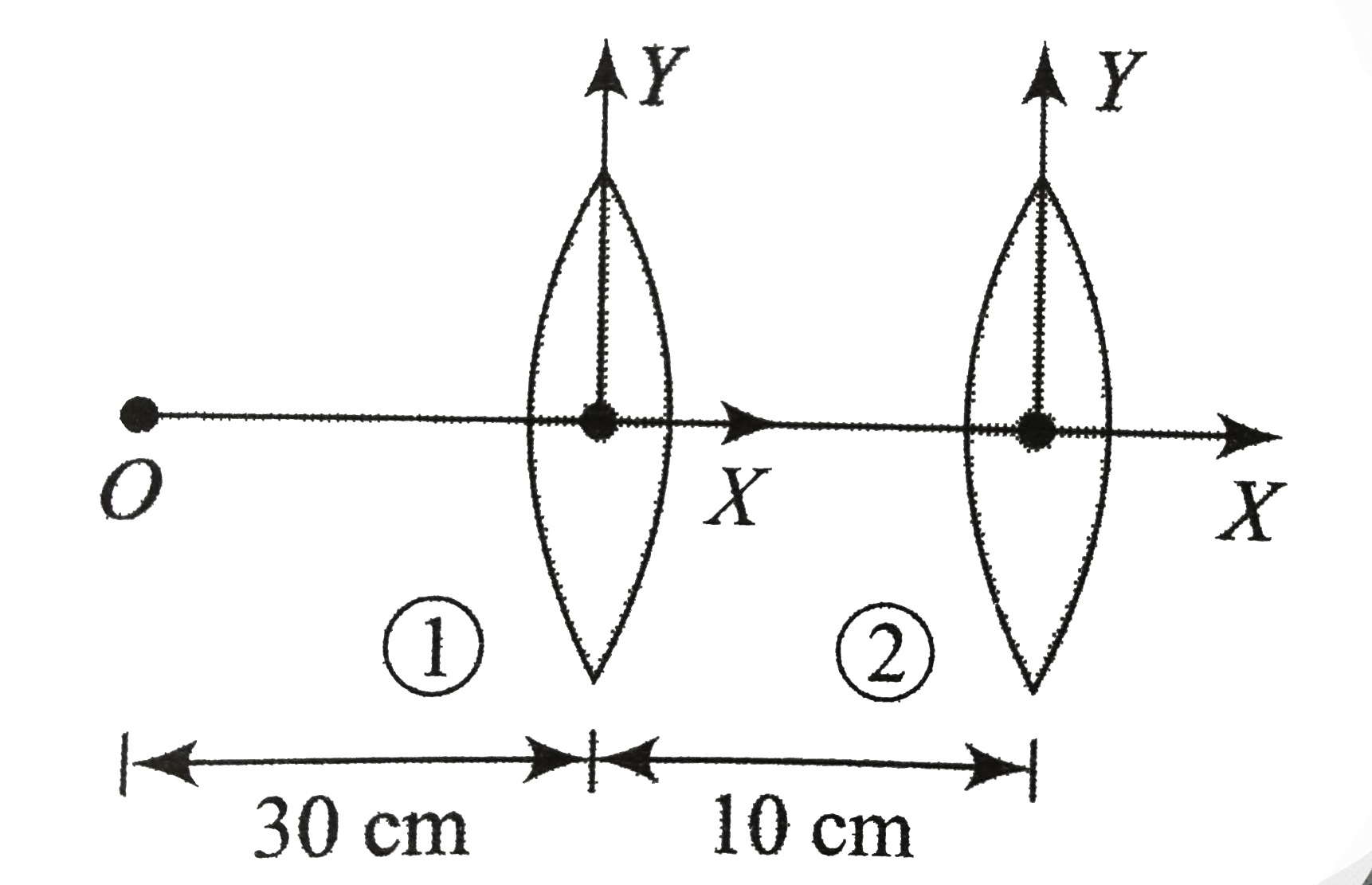A convex lens of focal length 10cm is placed co-axially 5cm away from a concave lens of focal length 10cm. If an object is placed 30cm in front of the convex lens, find the position of final image formed by the combined system.
For the convex lens,
f=10cm,u=−30cm
1v=1f+1u=110−130=115,v=15cm.
As concave lens is at 5cm from convex lens, therefore image formed by convex lens is at (15−5)cm=10cm beyond concave lens.
For concave lens
u=+10cm,f=−10cm
1v=1f+1u=−110+110=0 ∴v=∞
i.e., final image is formed at infinity.
Topper's Solved these Questions
- RAY OPTICSBook:PRADEEPChapter:RAY OPTICSExercise:Solved Example(c )
Explore 21 Videos
- RAY OPTICSBook:PRADEEPChapter:RAY OPTICSExercise:Solved Example(d)
Explore 32 Videos
- RAY OPTICSBook:PRADEEPChapter:RAY OPTICSExercise:Sample problem(d)
Explore 5 Videos
- PROPERTIES OF BULK MATTERBook:PRADEEPChapter:PROPERTIES OF BULK MATTERExercise:Multiple choice questions
Explore 7 Videos
- SYSTEMS OF PARTICLES AND ROTATIONAL MOTIONBook:PRADEEPChapter:SYSTEMS OF PARTICLES AND ROTATIONAL MOTIONExercise:Assertion- Reason Type questions
Explore 20 Videos
Similar Questions
A convex lens of focal length 10 cm is placed coaxially 5 cm away from a concave lens of focal length 10 cm. If an object is placed 30 cm in front of the convex lens, find the position of the final image formed by the combined system.
View SolutionA convex lens of focal length 10 cm is placed coaxially 5 cm away from a concave lens of focal length 10 cm. If an object is placed 30 cm in front of the convex lens, find the position of the final image formed by the combined system.
View Solution
Knowledge Check
A convex lens of focal length 40cm is in contact with a concave lens of focal length 25cm. The power of the combination is
A−1.5 dioptresB−6.5 dioptresC+6.5 dioptresD+6.67 dioptresA convex lens of focal length 40 cm is in contact with a concave lens of focal length 25 cm. The power of the combination is
A−1.5dioptersB−6.5 dioptersC+6.5 dioptersD+6.67 diopters
(a) (i) Draw a labelled ray diagram to show the formation of image in an astronomical telescope for a distant object.
(ii) Write three distinct advantages of a reflecting type telescope over a refracting type telescope.
(b) A convex lens of focal length 10 cm is placed coaxially 5 cm away from a concave lens of focal length 10 cm. If an object is placed 30 cm in front of the convex lens, find the position of the image formed by the combined system.
View SolutionA convex lens of focal length 20cm is placed coaxilly with a convex mirror of radius of curvature 20 cm. The two are kept 15 cm apart. A point object is placed 40 cm in front of the convex lens. Find the position of the image formed by this combination. Draw the ray diagram showing the image formation.
View SolutionA convex lens of focal length 20 cm and a concave lens of focal length 15 cm are kept 30 cm apart with their principal axes coincident. When an object is placed 30 cm in front of the convex lens, calculate the position of the final image formed by the combination. Would this result change if the object were placed 30 cm in front of the concave lens ? Give reason.
View SolutionA convex lens of focal length 30cm and a concave lens of focal length 60cm are placed in combination. If an object is placed 40cm away from the combination, find the position of the image.
View SolutionA convex lens of focal length 20cm is placed 10cm away from a second convex lens of focal length 25 cm. What wil be the location of the image of an object at 30 cm in front of the first lens?

View SolutionA convex lens of focal length 20 cm is placed in contact with a concave lens of focal length 10 cm. What is the focal length and power of the combination ?
View Solution

